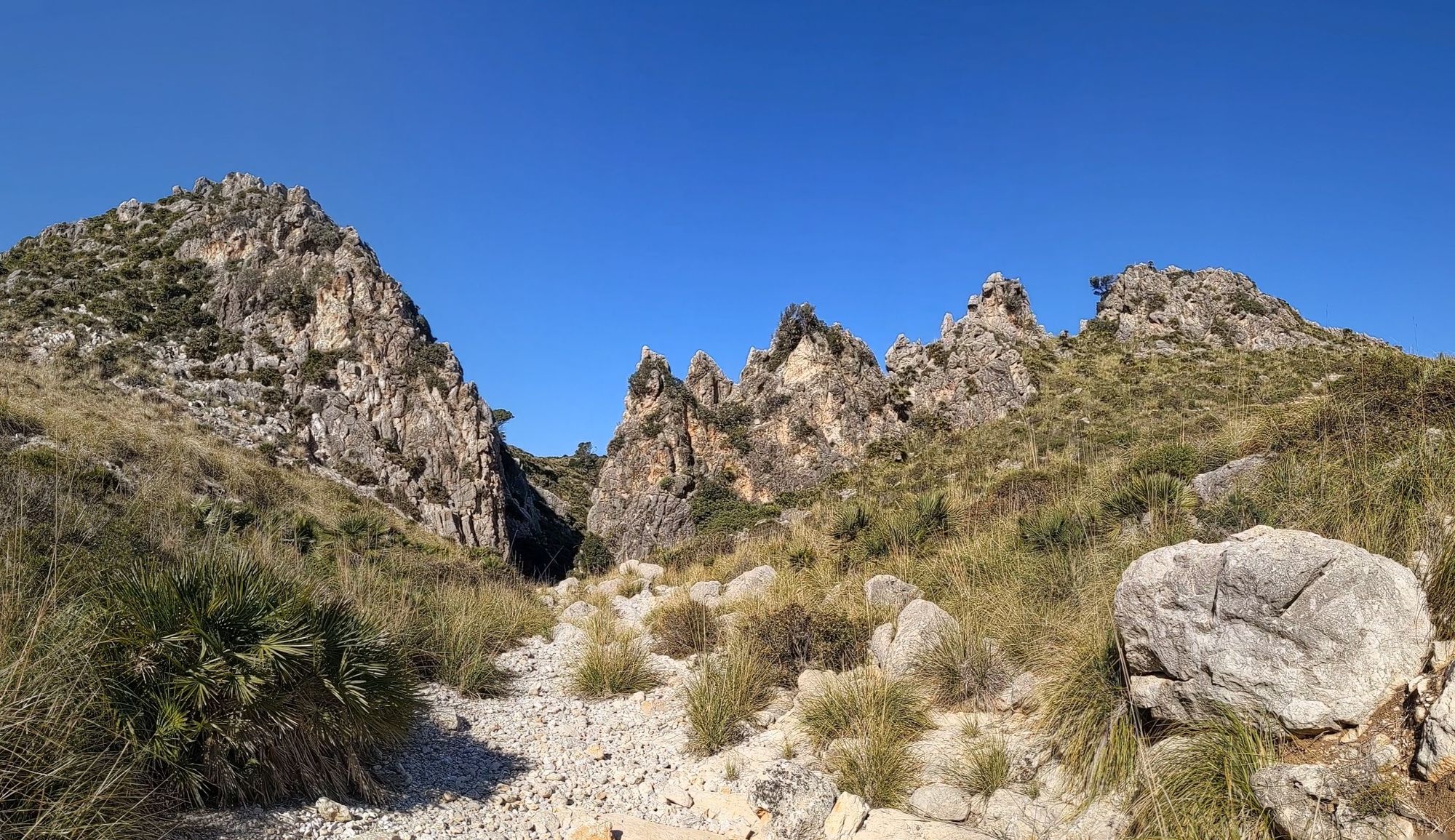Quick info
- Remote canyon with several rappels, bushwhacking and some wayfinding challenges
- Long outing with 16 kilometers to be covered. 6 km on pathless and technical terrain.
- Unique setting outside of the Tramuntana in the North-East of the island
General
While most readers of this guide will rightfully think of the Tramuntana first when it comes to adventures and the east coast of Mallorca is much better known for its sport climbing and deep water soloing there are some hidden treasures to be found there. One of them is the Parc de Llevant north of the town of Arta with its impressive fortified church up on a sizable hill.
The Parc de Llevant is a large nature protection area that encompasses many of the coastal hills and the rough northern coastline between Betlem and Cala Mesquida. Hikers, mountain bikers and birdwatchers flock to the area for a few hours in pristine nature or even spend some time at on of the few legal tent campgrounds right by the beach Arenalet de Verger.
The area played a role in the dark days of the Spanish civil war as well, as it was the site of a camp in which forced laborers were imprisoned. The main 4x4 track leading through the area was built with prison labor and during the approach you will pass the former prison camp.
For climbers the area does not seem very interesting on the first look. However hidden away from the main trails there is a technically fairly easy canyon that begs to be explored. It is called Torrent de s´Arboceret and runs for about four kilometers towards the Beach Cala de Sa Font Salada. With plenty of wayfinding challenges, a hearty amount of bush waking, some rappels and plenty of impressive views to take in it makes for a very worthwhile day out.
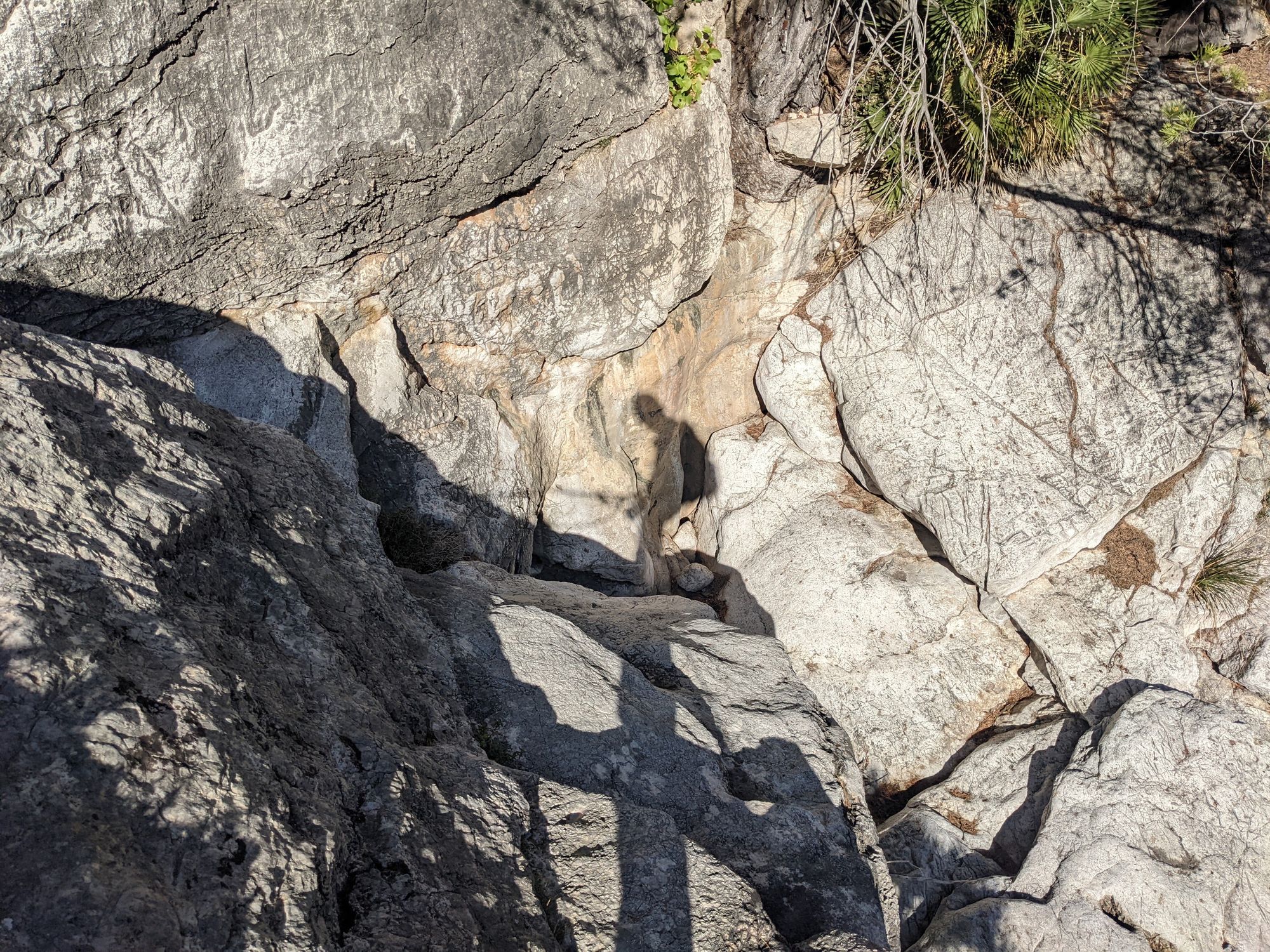
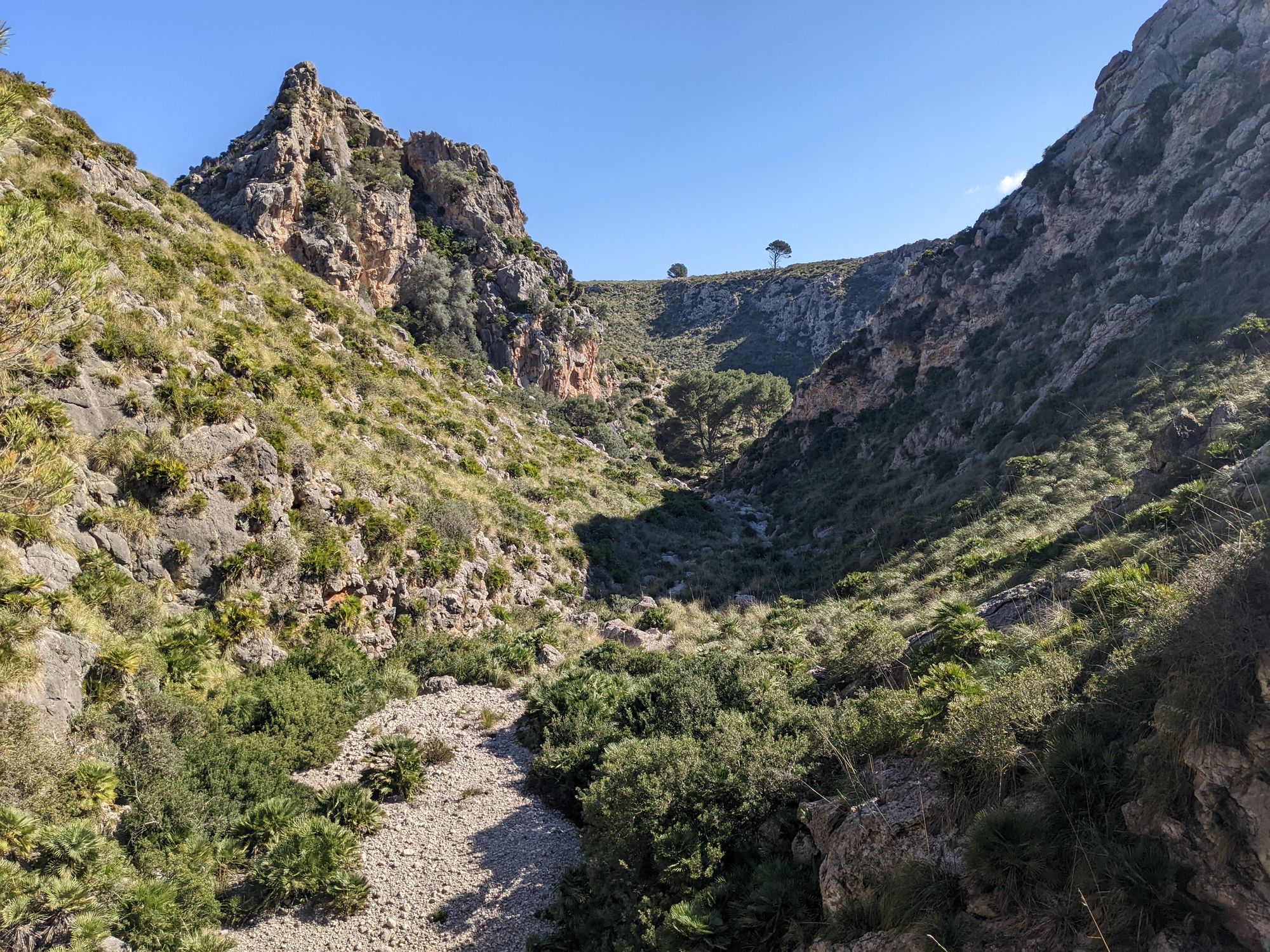
Logistics
Drive towards Arta and follow the signs towards the Parc Natural and the Ermita de Betlem. You will have to navigate through the narrow streets and will leave the town right by the fortified church. Follow the small road for a few kilometers (keep an eye out for road cyclists!) until the road splits into the pass towards Ermita de Betlem (left) and the Parc Natural (right). After a few hunderd meters more you will reach the Finca publica and the parking lot.
Arta and its church are worth a visit on their own. Stop on the way back on the large public parking right where you left town and walk up to the church and down into the lovely old town.
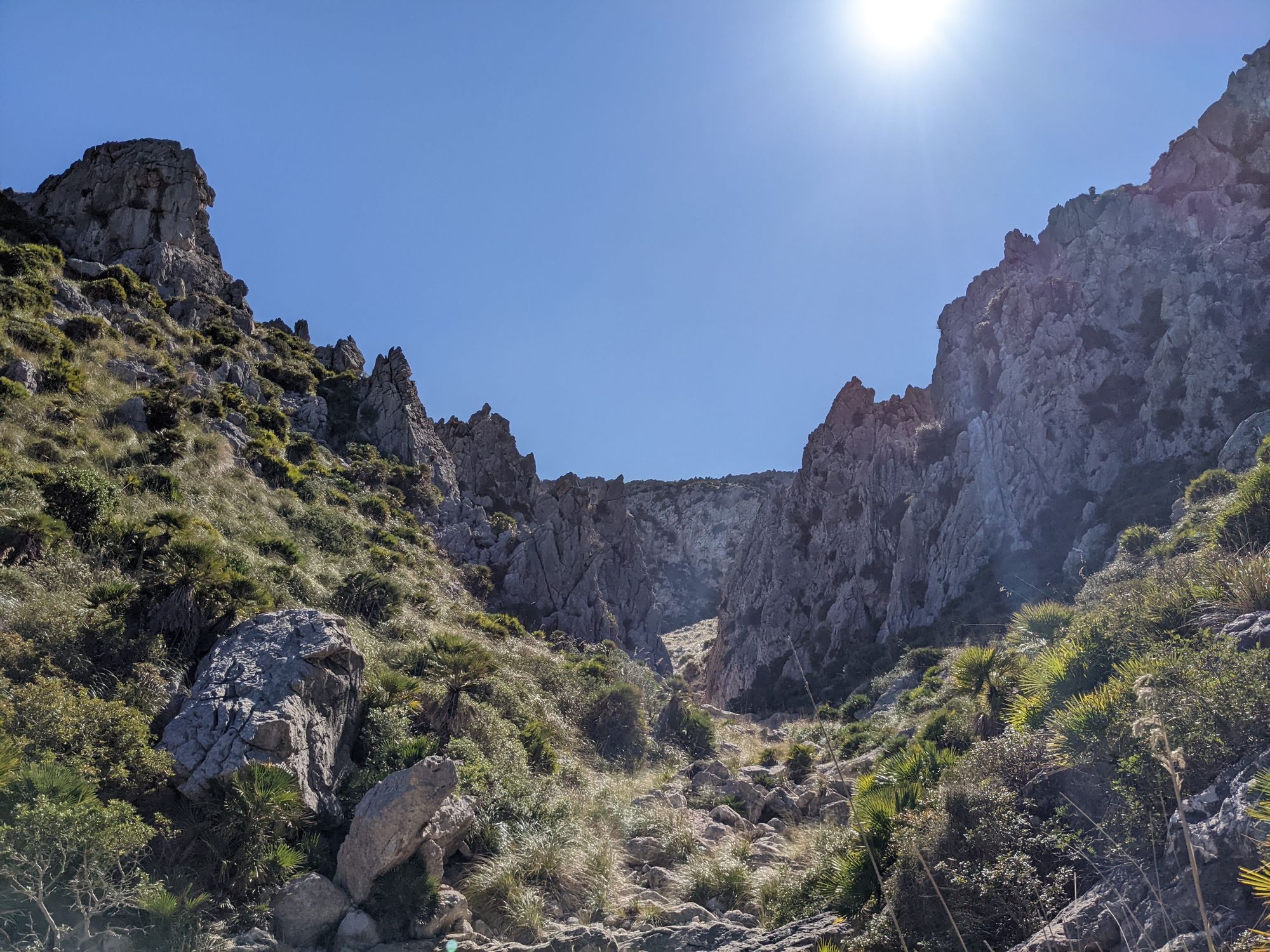
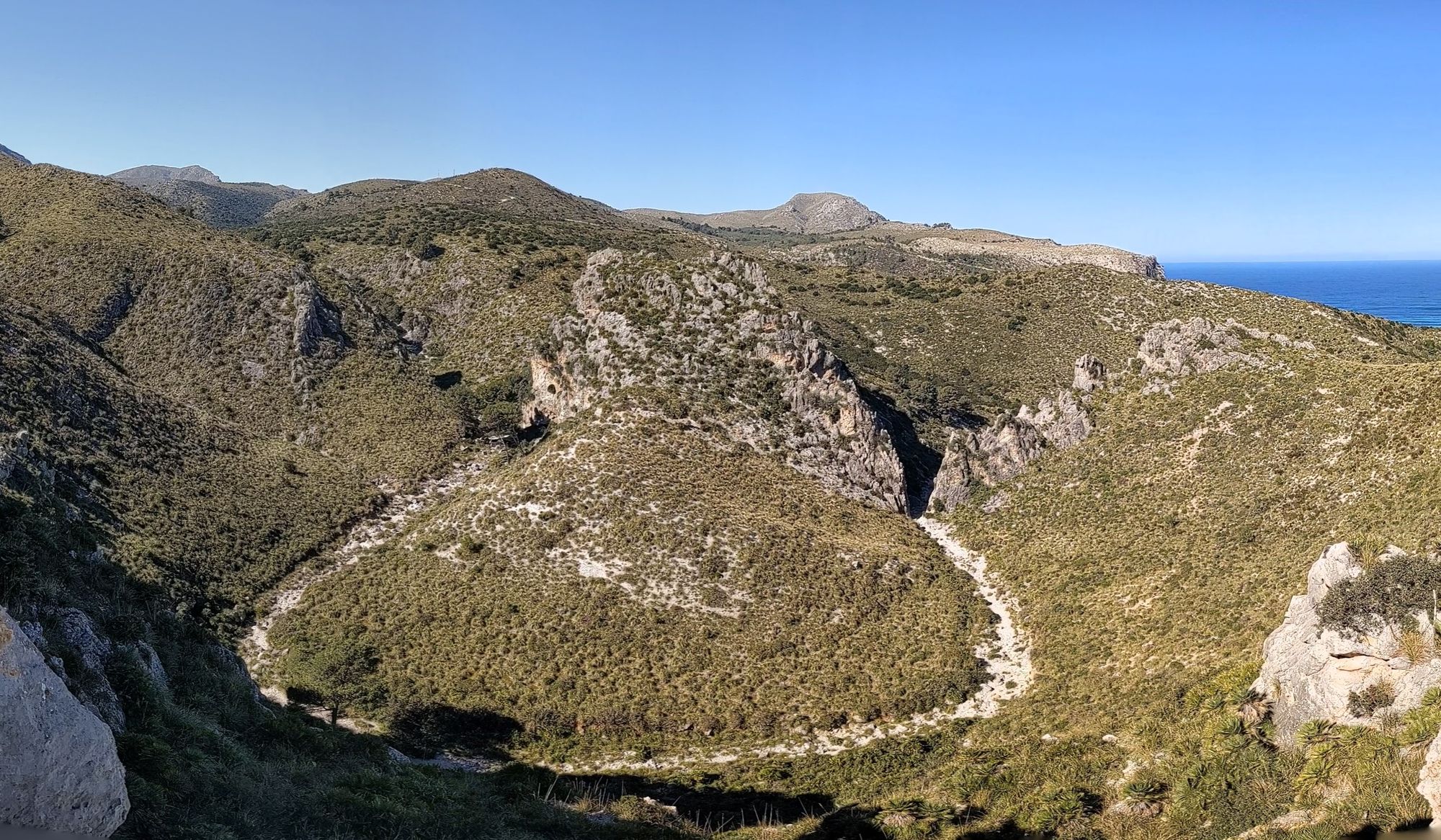
Approach
From the parking, follow the main track into the park and after a few minutes move on the marked trail towards the Campament dels Soldats (the former prison camp). After reaching the camp turn right onto the trail leading towards Coll de na Pastora. Shortly before the Coll take a sharp left and continue pathless for almost a kilometer downhill into the beginnings of the torrent that is visible from here. The start of the actual torrent is marked on the map.
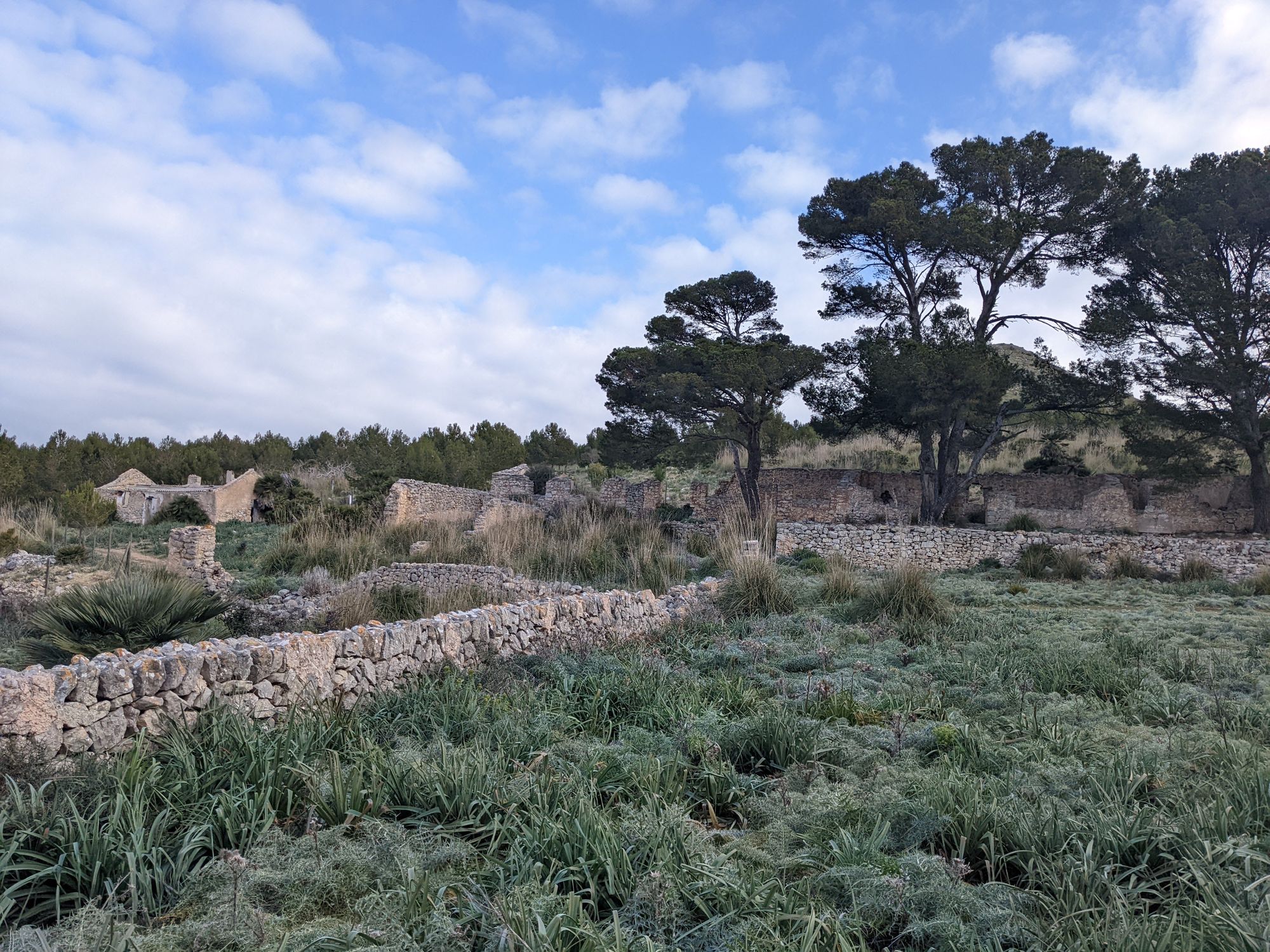
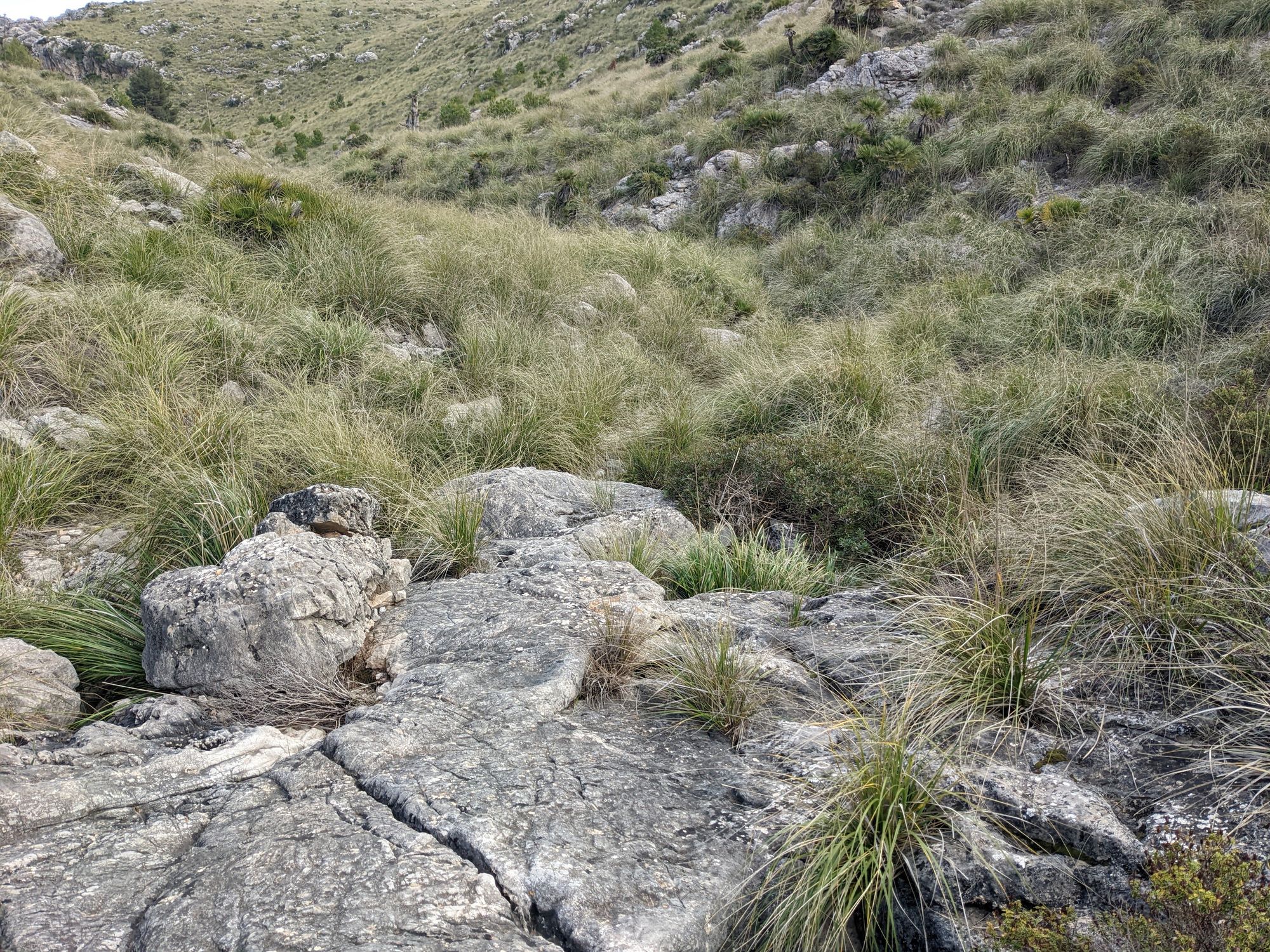
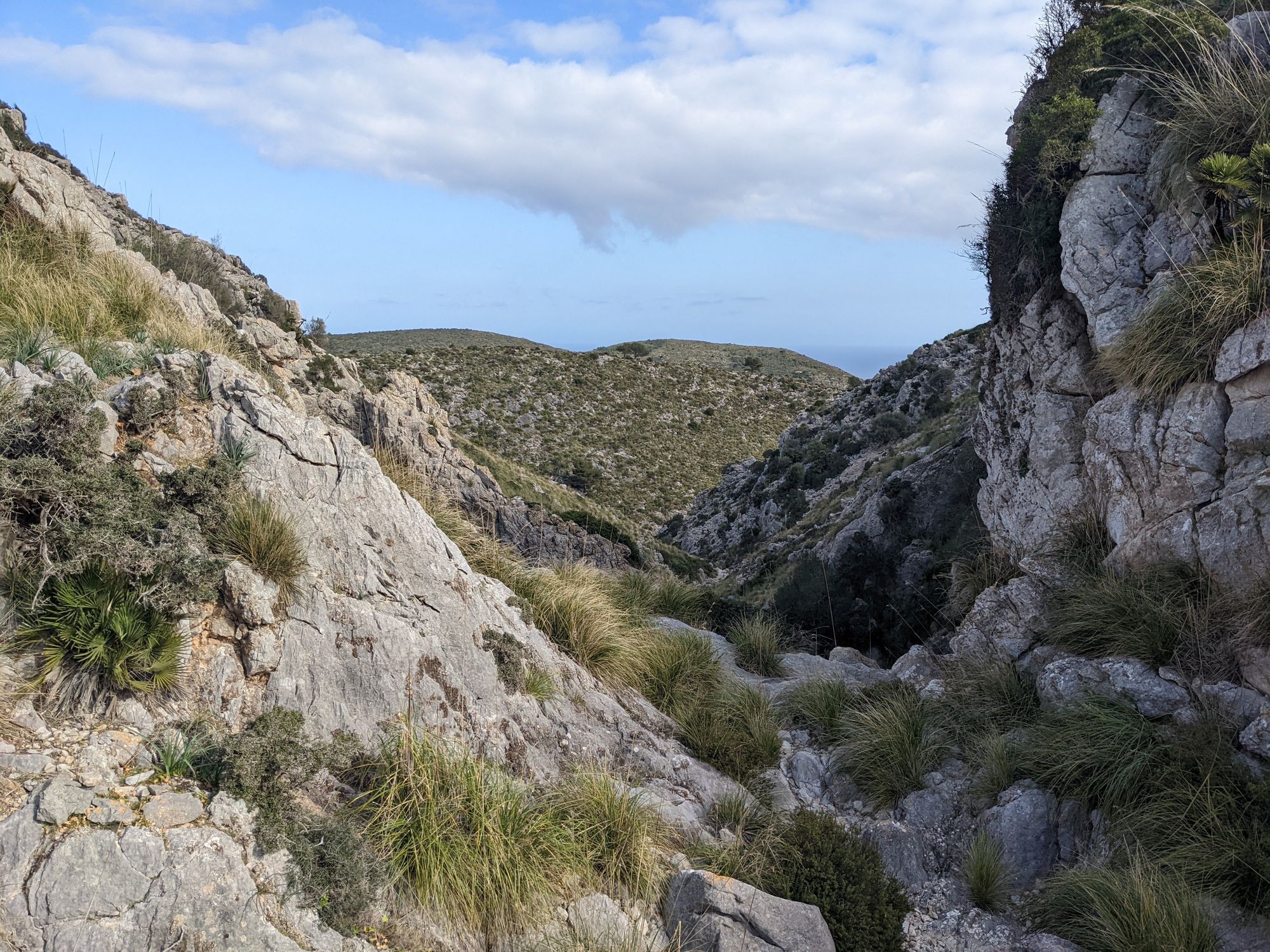
The canyon finishes by crossing a 4x4 track close to the sea. Turn right here and follow the track uphill. Continue all the way to the car park either on the track (longer) or by following a more direct small, seldomly used, hiking trail (as indicated on the map).
Technical information
- Up to five rappels (some sections can be down climbed to save time if the party feels comfortable with that).
- Rappel stations mainly consist of old threaded ropes and slings. Check closely before committing. You might need to search around to find them.
- Gear: Rappel gear, 40 meter rope (30 meters works but some downclimbing is necessary).
- Long pants are very recommended as you will bushwhack through a lot of thorny bushes and sharp grass.
- After rainfalls parts of the torrent will be filled with water and might be impassable.
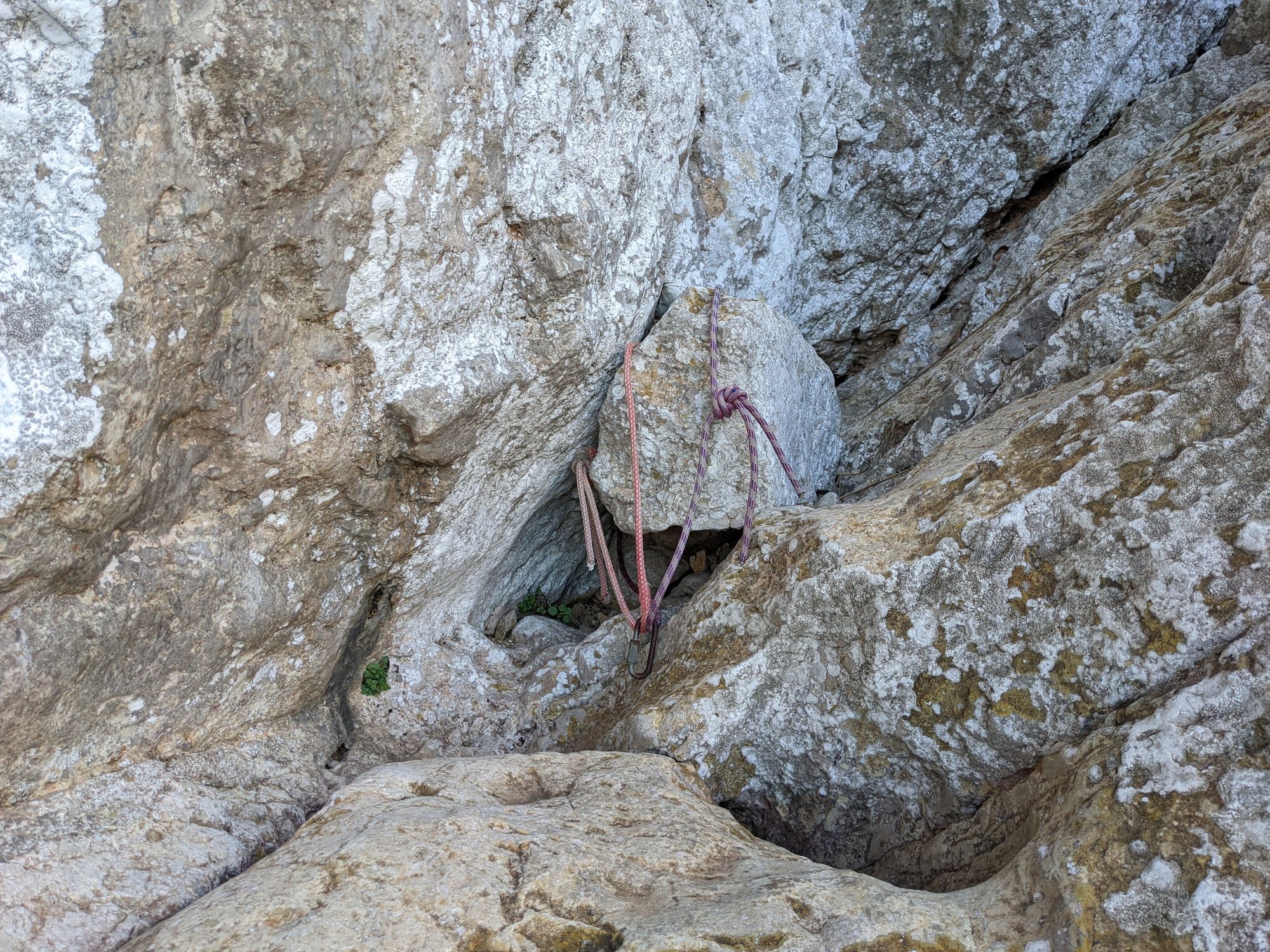
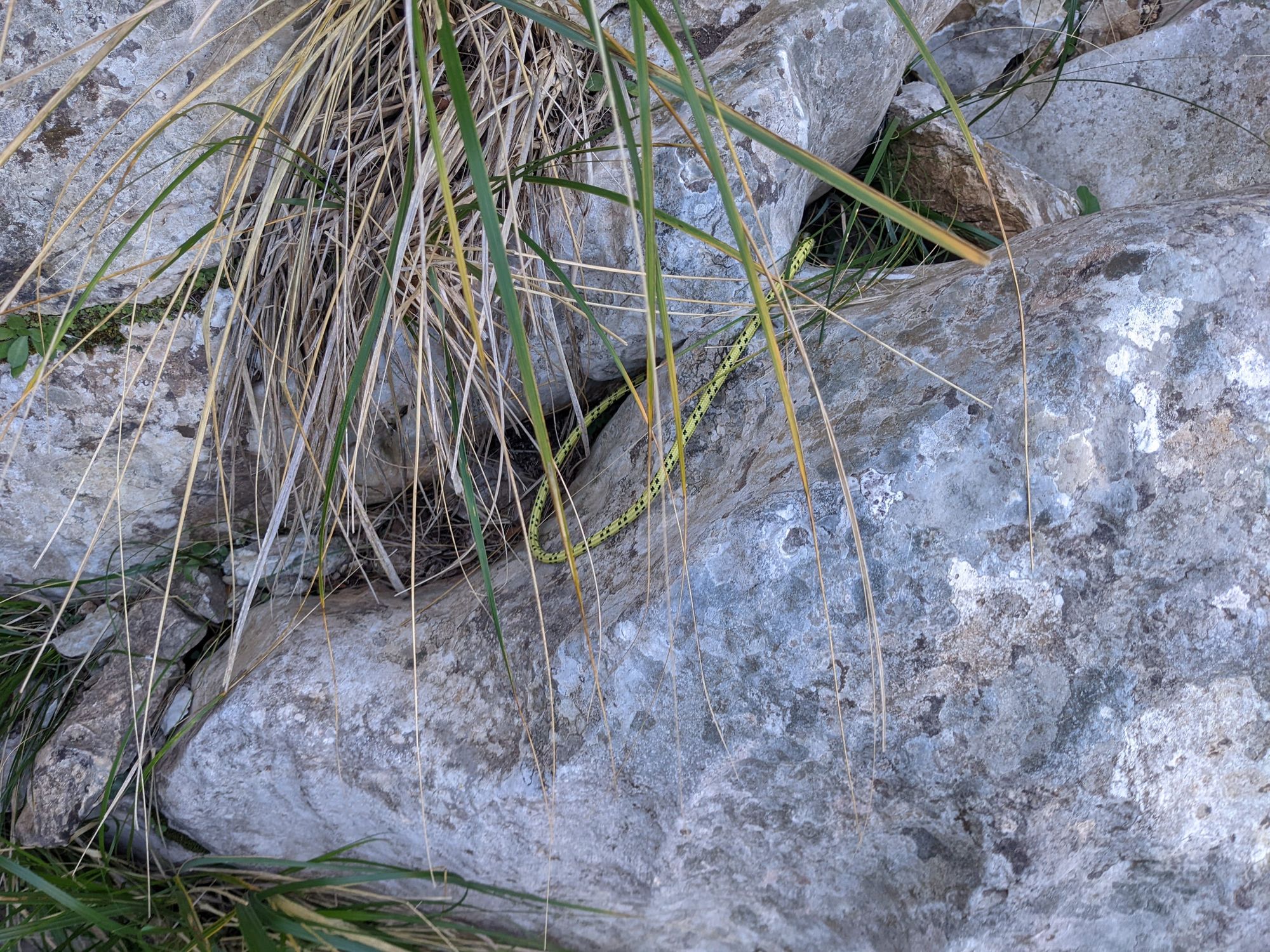
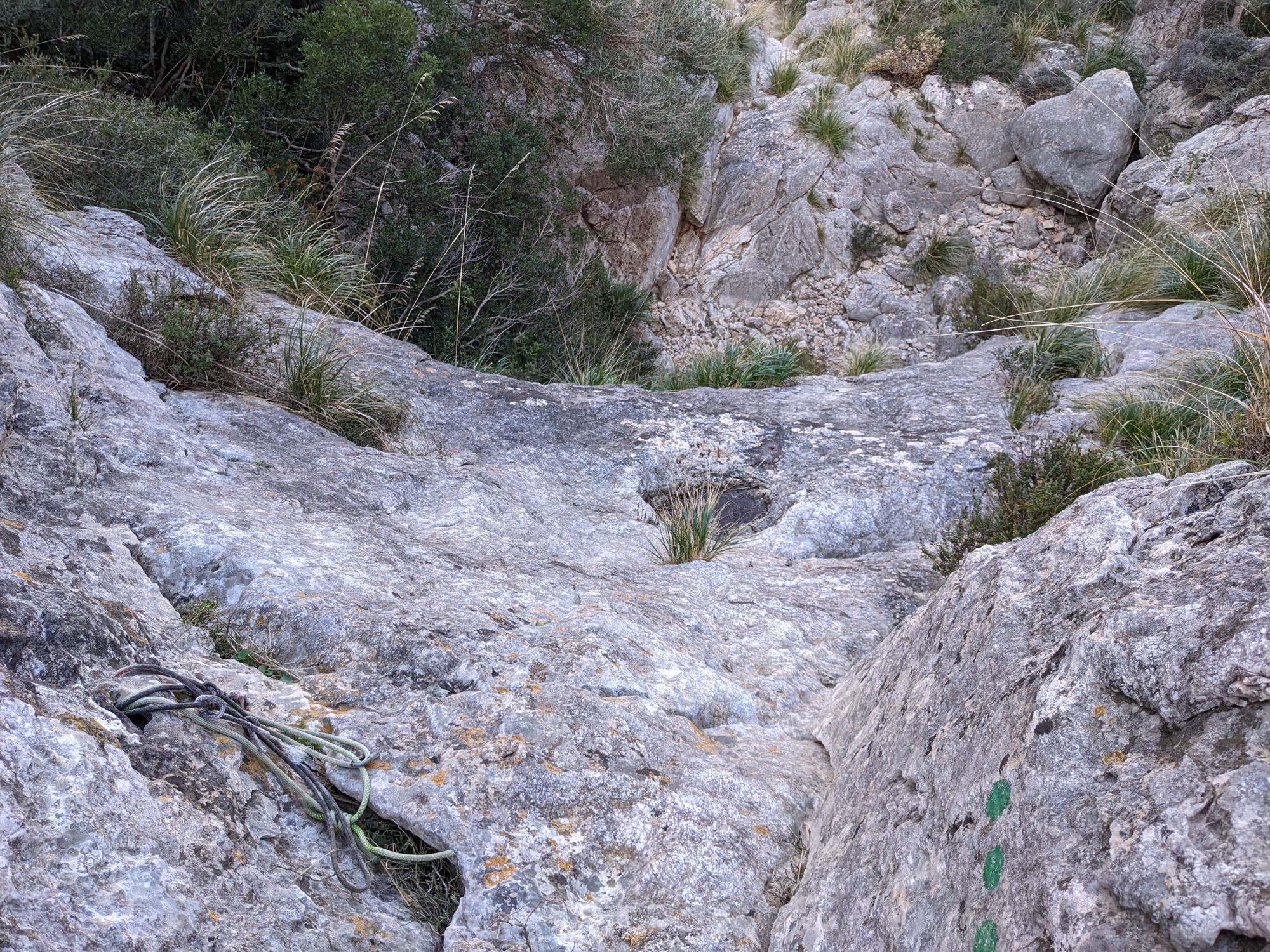
Route finding

- After the descent from Coll de na Pastora you will enter the torrent at its very beginning. Here it is still just small and very vegetated. Try staying low and make your way through the thorny bushes.
- The vegetation will start to make way for more water weathered rock and the going will get easier.
- After quite some time the rock walls start to get higher and the proper canyon begins.
- The first rappel (some ropes wrapped around a choke stone) is after about one kilometer in the canyon.
- The next two rappels follow quickly. Again threaded ropes and cords.
- After the three rappels a section of about 2 kilometers of scrambling over washed out rocks follows until the next and final two rappels in close succession. At least one bolted rappel station. Having done these two rappels, you can now store away your gear.
- Continue to follow the canyon along a wide bend and through a pebbly section with a stunning gap in the rock.
- Shortly after the break you will meet the hiking trail that will bring you back to the car park.
The whole excursion can easily take six to seven hours (or even longer) depending on the size and speed of the party.

